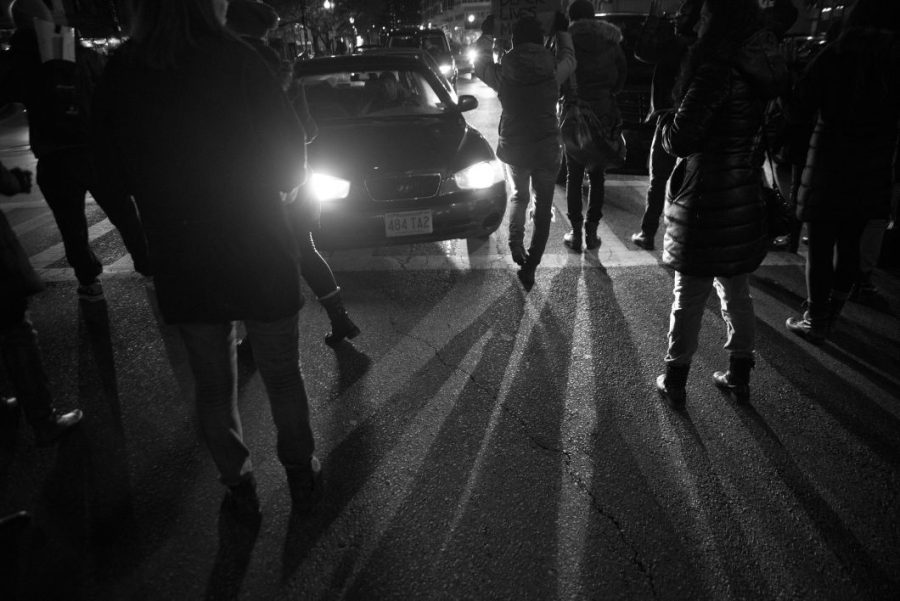Protesters moved through the streets of Boston on the night of Nov. 4, in response to a New York grand jury’s decision the day before to not indict white police officer Dan Pantaleo for the killing of black Eric Garner. Where they congregated, Boston police were close by.
A Facebook event page titled “#Enoughisenough: We Are The Ones, Justice For Eric Garner” indicated the event location was on the Boston Common, and 7 p.m. was the start time. It had 7,000 invitees listed as “Attending”.
Close to 2,000 people as a swirling mass stretched from the gates of the State House down into proximity of the nearby Annual Boston Tree Lighting Ceremony, said UMass Boston professor Joseph Ramsey, who was present. The group dispersed outwards from the Common around 9 p.m., according to Ramsey.
At 10:20 p.m., protesters began coalescing above Park Street Station. These protesters were of varied ethnic backgrounds and a wide range of ages, although most looked to be in their twenties. Some held signs and many participated in chants. Police quickly began appearing at the scene and stood next to their bikes passively, talking with one another or looking on.
One frequent chant was, “I can’t breathe” and the variation, “We can’t breathe.”
Eric Garner was killed on July 17 of this year, after a chokehold was used on him by Staten Island police officer, Justin Damico. Garner was confronted for selling individual cigarettes illegally. He was unarmed and did not react violently to being thrown on the ground, repeatedly saying, “I can’t breathe.” A bystander used his phone to record video of the incident.
Another chant that was common was “Hands up. Don’t shoot,” a reference to Michael Brown having his hands up when he was shot, according to some eye witness testimony in the case.
The number of attendees on Dec. 4 was less than that of the protest on Nov. 25, reacting to the news that Darren Wilson would not be indicted by a Ferguson grand jury for his killing of Michael Brown.
“I’m here because I’m frustrated,” said Hakeem Cousins, 22, of Weymouth.
“This has been going on for a long time, people now are just starting to get that it is an issue. It’s an injustice in our system.”
Harvard University student Jimena Villar, 22, said, “It’s important for people to let their anger out, to show people emotional and moral support and let them know that they’re not alone.
The protesters remained non-violent. They laid on the Park Street train tracks in an act of protest called a “die-in.” Police responded by shutting the station down. Would-be commuters expressed frustration upon reaching the locked ground-level entrance and headed in the direction of Arlington Station.
“[The die-in] has a long history in the anti-war movement. People play dead in order to call attention to the actual dead. It’s street theater,” said Ramsey, who teaches a class called “The Sixties,” and provides insight into the protest techniques and strategies implemented during the night of Nov. 4.
One chant heard was, “If you shoot them down, we will shut it down,” which in conjunction with other actions, Ramsey interprets to mean that protesters were attempting to affect the transportation system in Boston.
“[The idea is that] by impairing the function of the transportation system they are trying to call attention to perceived dysfunctional aspects of the criminal justice system.”
At 10:02 p.m., just south of where Charles Street intersects with Boylston Street, protestors raised their hands and stood in a line to block traffic. Drivers were soon honking. A woman screamed out her window insistently, “Move, I need to get home to my kids!”
Protester stands by fence in front of State House.






















































